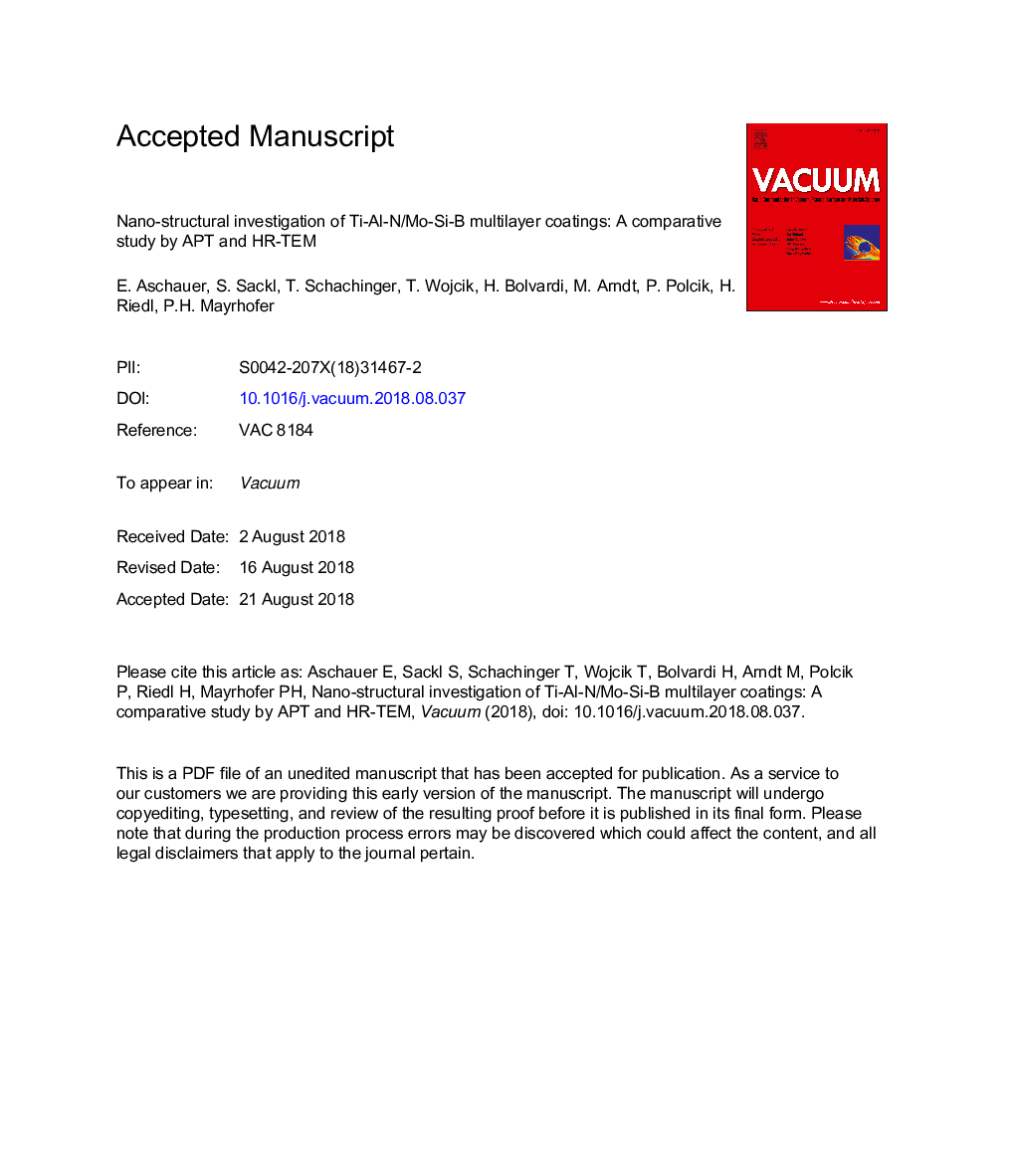| Article ID | Journal | Published Year | Pages | File Type |
|---|---|---|---|---|
| 10128793 | Vacuum | 2018 | 19 Pages |
Abstract
Nano-composites often represent a challenge for spatially resolved analysing methods. The overlap of specific signals, for example in the mass-to-charge spectrum during atom probe tomography (APT) analysis or the intersection of electron energy loss edges in electron energy loss spectroscopy (EELS), leads to highly challenging results. Therefore, a complementary use of different techniques is essential to fully characterise a given system. Within this work, we studied our Ti-Al-N/Mo-Si-B multilayer (comprising alternating 31â¯nm thin arc evaporated fcc-Ti0.57Al0.43N layers and amorphous 6â¯nm thin Mo0.58Si0.28B0.14 layers), by high-resolution transmission electron microscopy, EELS as well as APT and completed the results by comprehensive X-ray diffraction measurements. We focused on the microstructure and crystallographic evolution during thermal loading - up to 1400â¯Â°C - and hence a detailed analytical description applying a wide set of high resolution techniques. When exposed to high temperatures, the as-deposited amorphous MoSiB layers form the oxidation resistant, intermetallic phases T1-Mo5Si3 and T2-Mo5SiB2. The layered arrangement between Ti-Al-N and Mo-Si-B allows to postpone the formation of the comparative soft, hexagonal wurtzite type AlN (due to the decomposition of fcc-Ti1-xAlxN layers) up to 1200â¯Â°C, which is by â¼200-300â¯Â°C above the typical formation temperature of w-AlN in homogeneously grown single phase fcc-Ti1-xAlxN thin films.
Related Topics
Physical Sciences and Engineering
Materials Science
Surfaces, Coatings and Films
Authors
E. Aschauer, S. Sackl, T. Schachinger, T. Wojcik, H. Bolvardi, M. Arndt, P. Polcik, H. Riedl, P.H. Mayrhofer,
